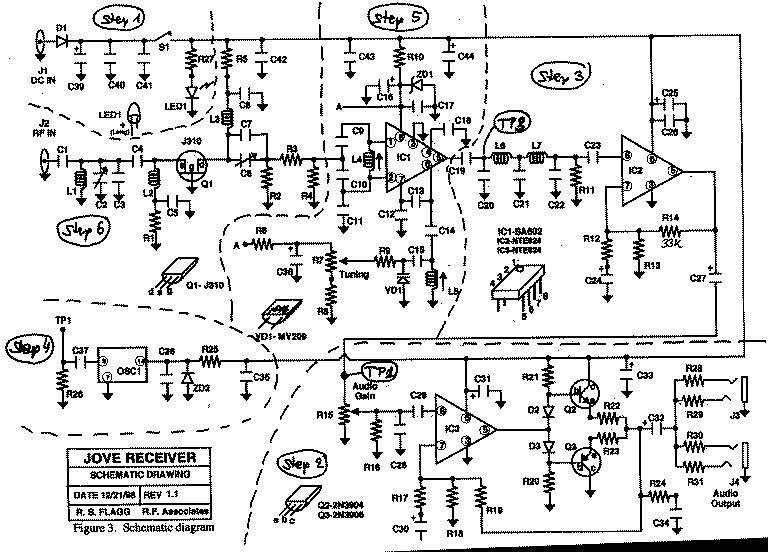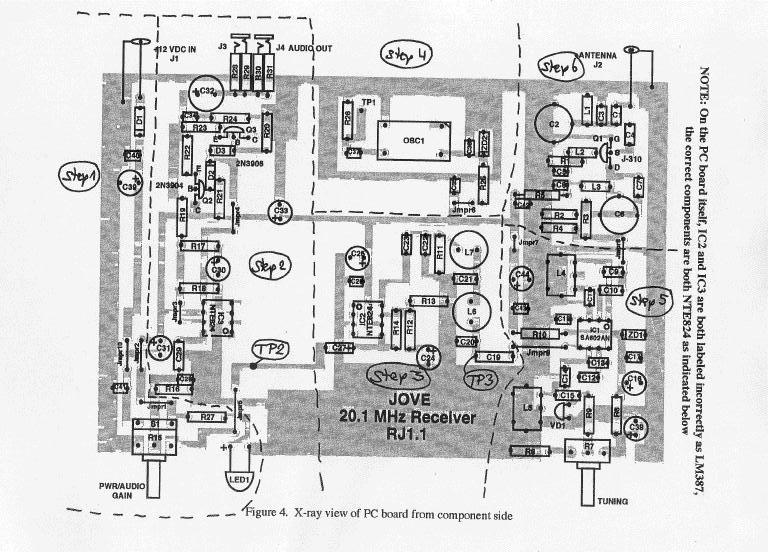
Our preferred assembly procedure
Joachim Köppen DF3GJ Kiel/Strasbourg/Illkirch Summer 2003
Based on my own experiences with assembling the receiver, I suggest a somewhat different approach than described in the manual. I prefer to assemble each individual stage or unit of the circuit, starting from the output end, and test its proper functioning. Only then one proceeds with the next stage. This allows early detection and elimination of any faults.
1. First of all, check whether the holes in the printed circuit board provided for the coils L4 and L5 (the ones within a metal can) are large enough for the matel tags of the can to pass through. If not, use a small screwdriver to enlarge a bit the holes by pushing it through the holes, from the top as well as from the bottom.
2. Mount all components on the front and rear panels. Provisionally mount the circuit board on the bottom panel. Assemble the enclosure, except the top panel.
3. Solder the circuit board to the potentiometer lugs, and make all the connenctions between the board and the sockets J1, J2, J3, and J4.
4. When the board is well fixed, undo the screw connecting the board to the bottom panel, open the enclosure screws on one side, remove the bottom panel, and fix the enclosure screws again.
Now we have the circuit board well mounted (and protected) in the enclosure and the external connections can be made by the appropriate plugs. This makes it easier to handle and to test. We can begin with mounting of the components, proceeding in the sequence of the stages sketched in the accompanying circuit diagram and board layout.
The components of each stage may be mounted to the board in any sequence, but often it is wise to start with the larger ones, as they will restrict the space for the other parts. When any test results are not satisfactory, it is a good idea to check the voltages and compare them with Fig. 19 of the assembly manual.
Here the components of these steps are indentified in the circuit schematic:

and here on the board layout:

| Top of the Page | back to Main Page | back to my Home Page |